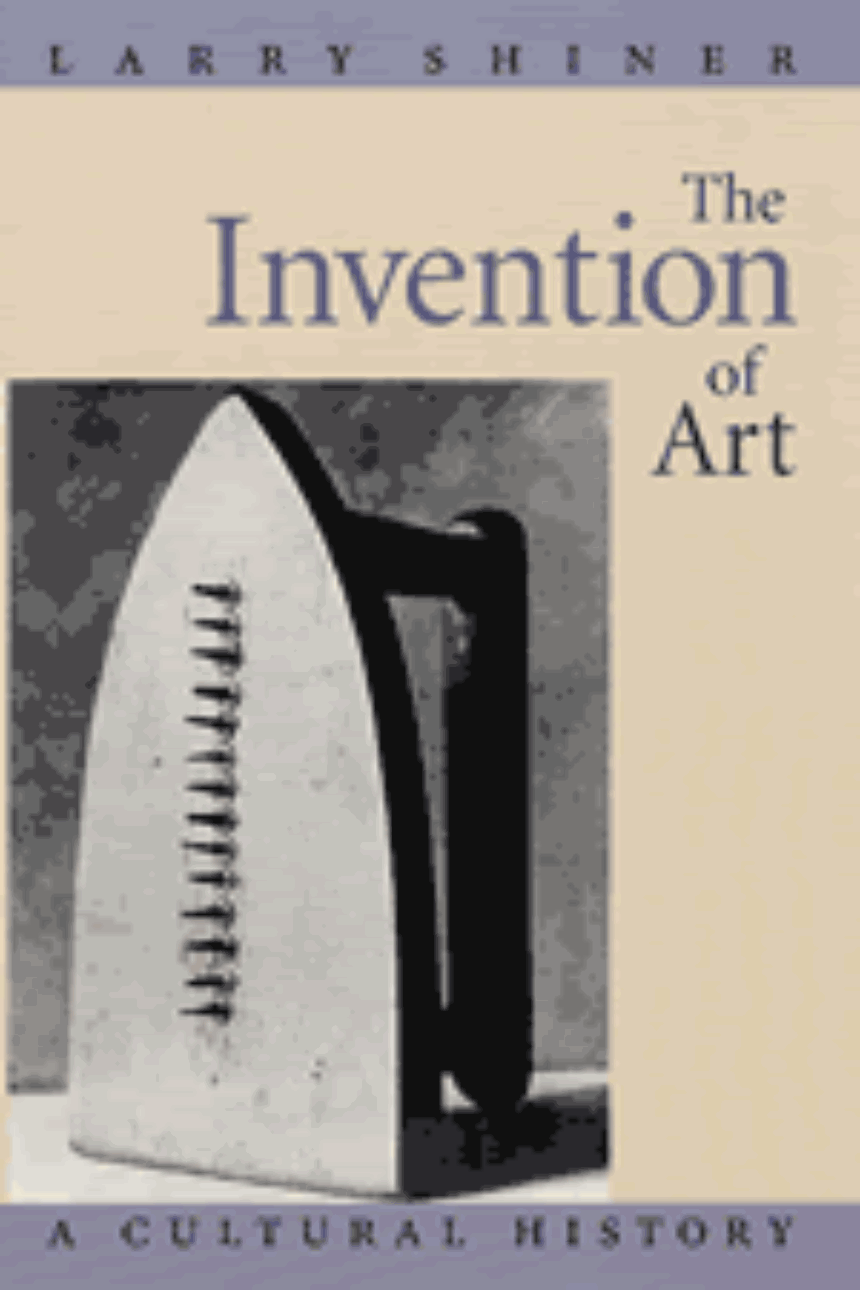The Invention of Art
A Cultural History
With The Invention of Art, Larry Shiner challenges our conventional understandings of art and asks us to reconsider its history entirely, arguing that the category of fine art is a modern invention—that the lines drawn between art and craft resulted from key social transformations in Europe during the long eighteenth century.
352 pages | 87 halftones, 3 line drawings, 5 tables | 6 x 9 | © 2003
Architecture: History of Architecture
Art: American Art, Ancient and Classical Art, Art Criticism, Art--General Studies, European Art
Culture Studies:
History: American History, European History
Music: General Music
Philosophy: Aesthetics, General Philosophy
Women's Studies:
Reviews
Table of Contents
Preface
Introduction
The Great Division
Words and Institutions
PART I: BEFORE FINE ART AND CRAFT
Overview
1. The Greeks Had No Word for It
Art, techne, ars
The Artisan/Artist
2. Aquinas’s Saw
From "Servile" to "Mechanical" Arts
Artificers
The Idea of Beauty
3. Michelangelo and Shakespeare: Art on the Rise
Opening up the Liberal Arts
The Changing Status of Artisan/Artists
The Ideal Qualities of the Artisan/Artist
Shakespeare, Jonson, and the "Work"
A Proto-Aesthetic?
4. Artemesia’s Allegory: Art in Transition
The Artisan/Artist’s Continuing Struggle for Status
The Image of the Artisan/Artist
Steps toward the Category of Fine Art
The Role of Taste
PART II: ART DIVIDED
Overview
5. Polite Arts for the Polite
Constructing the Category of Fine Art
The New Institutions of Fine Art
The New Art Public
6. The Artist, the Work, and the Market
The Separation of the Artist from the Artisan
The Ideal Image of the Artist
The Fate of the Artisan
The Gender of Genius
The Ideal of the "Work of Art"
From Patronage to the Market
7. From Taste to the Aesthetic
Learning Aesthetic Behavior
The Art Public and the Problem of Taste
The Elements of the Aesthetic
Kant and Schiller Sum Up the Aesthetic
PART III: COUNTERCURRENTS
Overview
8. Hogarth, Rousseau, Wollstonecraft
Hogarth’s "Hedonist Aesthetics"
Rousseau’s Festival Aesthetic
Wollstonecraft and the Beauty of Justice
9. Revolution: Music, Festival, Museum
The Collapse of Patronage
The Revolutionary Festivals
Revolutionary Music
The Revolution and the Museum
PART IV: THE APOTHEOSIS OF ART
Overview
10. Art as Redemptive Revelation
Art Becomes an Independent Realm
The Spiritual Elevation of Art
11. The Artist: A Sacred Calling
The Exalted Image of Artists
The Descent of the Artisan
12. Silences: Triumph of the Aesthetic
Learning Aesthetic Behavior
The Rise of the Aesthetic and the Decline of Beauty
The Problem of Art and Society
PART V: BEYOND ART AND CRAFT
Overview
13. Assimilation and Resistance
The Assimilation of Photography
Varieties of Resistance: Emerson, Marx, Ruskin, Morris
The Arts and Crafts Movement
14. Modernism, Anti-Art, Bauhaus
Modernism and Purity
The Case of Photography
Anti-Art
The Bauhaus
Three Philosopher-Critics on the Division of Art
Modernism and Formalism Triumphant
15. Beyond Art and Craft?
"Primitive Art"
Crafts-as-Art
Architecture as Art
The Photography-as-Art Boom
The "Death of Literature"?
Mass Art
Art and Life
Public Art
Conclusion
Notes
References
Index
